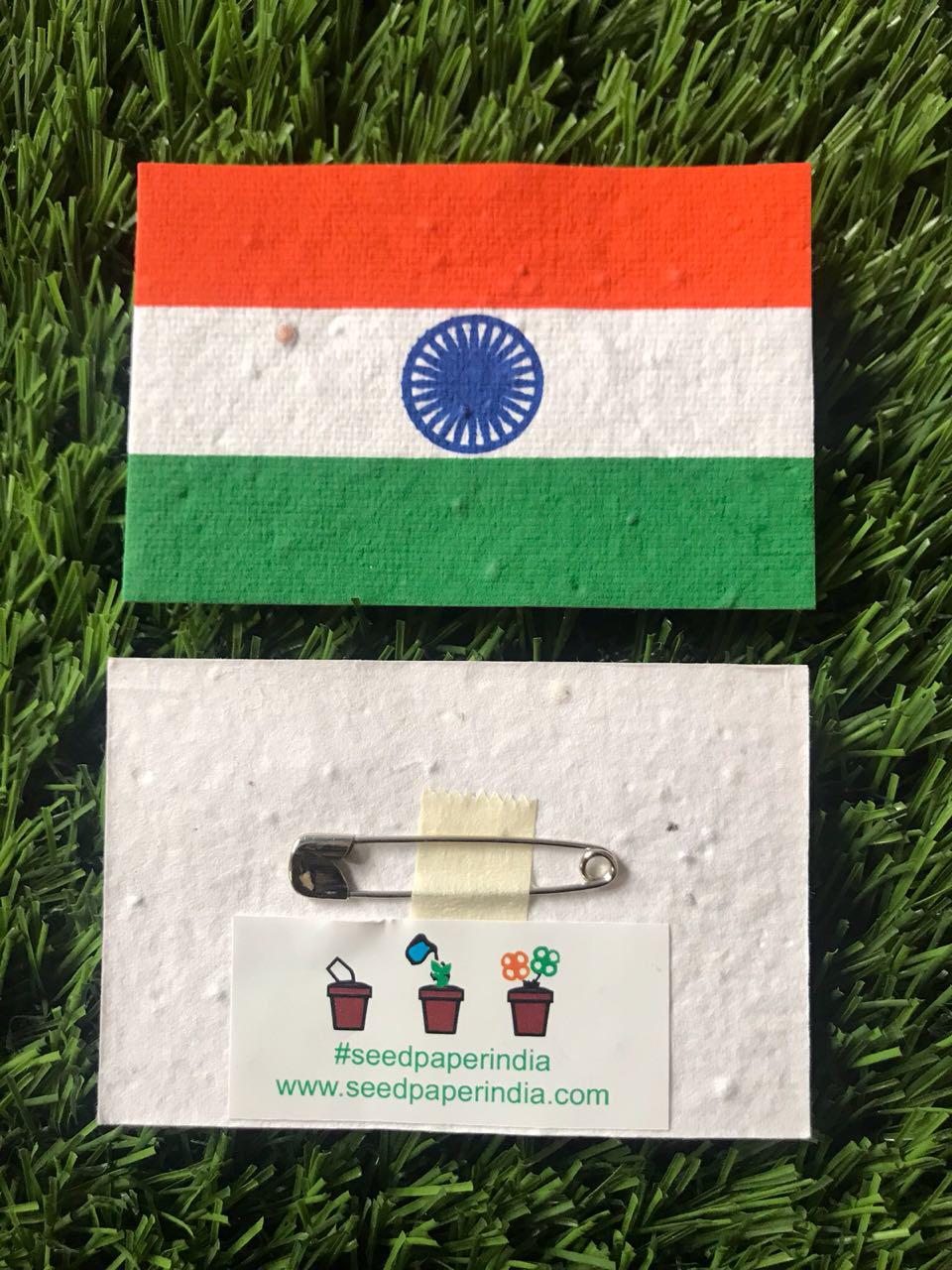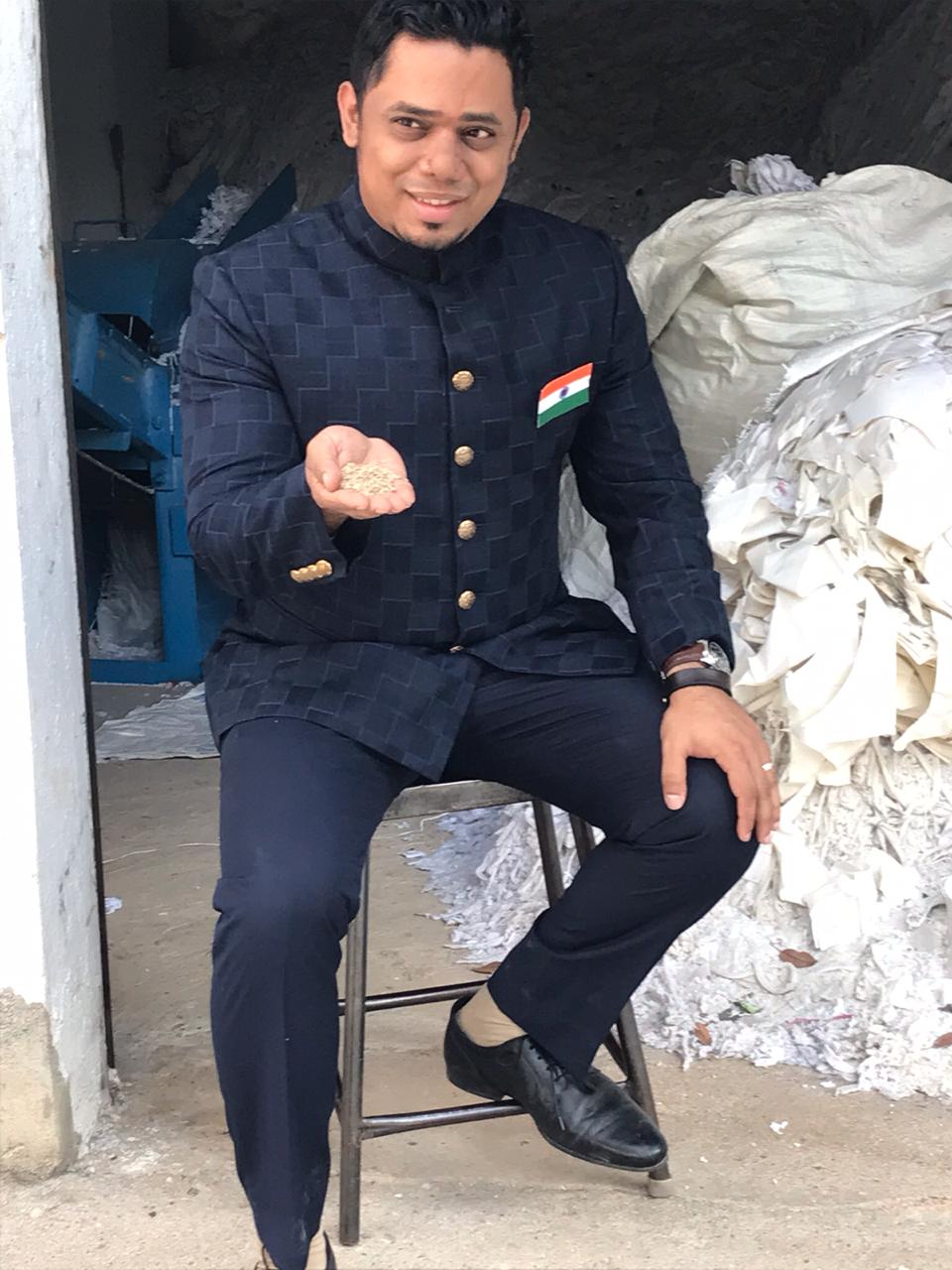New Delhi: Single-use plastic is emerging to be the biggest polluter of the environment in every possible way. Post Independence Day celebrations, the tri-coloured national flag, that symbolises and represents India, either end up in the landfills or get burnt along with other waste that can cause air pollution, and even contamination of groundwater. To make this year’s Independence Day celebrations eco-friendly, Bengaluru start-up has developed flags from seed paper. Roshan Ray, founded Seed Paper India five years ago. Talking to NDTV about the idea behind the innovation, Roshan says,
Every event and occasion generates truck loads of waste. For instance, before Independence Day you will see children selling flags at red lights and bus stops but after the Independence Day, you will find same flags lying unattended on the roads. It is in 2017 when I gave a thought to the amount of waste generated and decided to replace to-be-waste with a plant.
The seeds paper flags made using handmade paper have Tulsi seeds embedded in them and are dyed using organic ink. While colour saffron is obtained by mixing turmeric powder with food grain colour, spinach is used for green colour and blueberries for Ashoka Chakra to get the blue colour.
Seed Paper India supplied 35,000 flags on Independence Day last year and one lakh on Republic Day this year and has already received orders for five lakh flags. But the journey to five lakh flags has not been a cakewalk; Roshan says,
It is a disrespect to put a national flag on the ground and many think that by putting a flag in a pot we are disregarding it. But I believe this is the highest form of respect one can give to their national flag. You are not discarding the flag but converting it into Tulsi (Basil) plant which is considered as one of the most sacred plants.
Plantable flags that are supplied pan India start from as low as Rs. 5 and goes up to Rs. 12, depending on customisation like adding company’s or school’s logo or a slogan at the back side and the quantity of the flags.
The seed paper used in making flags is made from 100 per cent handmade paper, which has its base in discarded cotton fibers that would have otherwise reached landfills and Tulsi seeds are embedded into the paper.
Also Read: Rakhis’ Made From Cow Dung At This Cow Shelter In Uttar Pradesh
The production of seed paper used in the making of flags is a five step process. The first step involves collecting waste cloth cuttings, fine chopping them into a rag chopping machine and then washing them. The cloth cutting is then taken in a beater machine which grinds it to a fine pulp after 8-12 hours of beating. The Pulp is then poured in an agitation tank which mixes the pulp and then poured into a vat where the seeds are added. After this, the sheets of seed paper are formed. The seed paper sheets are then left for 5-7 days for natural drying. Once sheets are ready, they are cut into shapes and sizes and printed as per the requirement.
Sharing her experience of using plantable products, Dr Sandhya from Bengaluru says,
When I first heard about plantable products, I was very impressed by the novelty of the idea and how it taps every individual by adding seeds in almost every product. In the case of flags, we all use it but after I-day we don’t know what to do with it and somehow it becomes a part of the garbage. This year when one of my friends told me about seeds flags, I explored the product and placed my order. I have decided to distribute it among my younger cousins and their children so that they can have their own flag cum plant and nurture it.
In the past, Dr Sandhya has used seed pencils and as per her experience, pencils did sprout into a plant. While some took more time is needed, while some sprouted within days of sowing them. It also depends on how you take care of it, says Dr Sandhya.
Similar feedback was shared by Jyothi, Bengaluru based teacher, who purchased plantable flags last year and this republic day and now has a Tulsi plant at her place.

The seeds paper flags made using handmade paper have Tulsi seeds embedded in them and are dyed using organic ink
Roshan is not alone in this fight against plastic. Divya Shetty and Vishnu Vardhaan, founders of Pepaa (erstwhile Plantcil), a brand dealing in plantable products too offer plantable flags under their initiative #FreedomFromPlasticFlags. With the idea of ‘what if our flag can go from use and throw to use then grow’ the duo introduced plantable flags in 2018 and in its first year they managed to sell over 50,000 flags.
Sharing the reason behind giving a green and an eco-friendly spin to the national flag, Divya says,
Every year crores of plastic flags are sold and we are guilty of purchasing that to showcase our patriotism. 73 crore plastic flags are discarded right after a single-use.
Flags fashioned out of plantable seed paper come in like 100 flags, 500, 2000, 5000 and 10000 flags. While a pack of 100 flags will cost Rs. 600, 10,000 flags will fetch you Rs. 20,000.
This year you too can make a difference by opting for seed paper flag – one that grows into a plant on sowing.
NDTV – Dettol Banega Swachh India campaign lends support to the Government of India’s Swachh Bharat Mission (SBM). Helmed by Campaign Ambassador Amitabh Bachchan, the campaign aims to spread awareness about hygiene and sanitation, the importance of building toilets and making India open defecation free (ODF) by October 2019, a target set by Prime Minister Narendra Modi, when he launched Swachh Bharat Abhiyan in 2014. Over the years, the campaign has widened its scope to cover issues like air pollution, waste management, plastic ban, manual scavenging and menstrual hygiene. The campaign has also focused extensively on marine pollution, clean Ganga Project and rejuvenation of Yamuna, two of India’s major river bodies.





























Harshi
August 18, 2022 at 9:03 pm
You are doing great work for nation or country